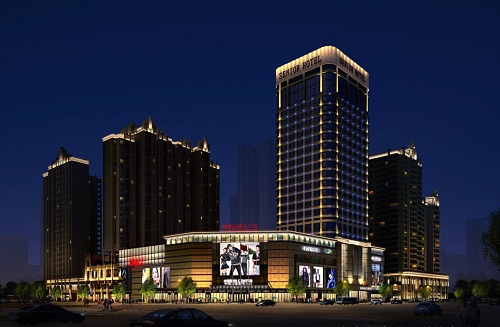

Outdoor lighting is so much a part of our everyday lives that we don’t tend to pay much attention to it…unless it is lacking in areas, which makes us feel unsafe, or is so bright that it intrudes into our homes or impedes our vision. Many organizations have produced or weighed in on recommendations and guidance for implementing outdoor LED lighting, sometimes to the point that it generates conflict within and even beyond the lighting community. How should we balance safety and security with light intensity, output levels, and distribution? What is considered “good” outdoor lighting design? And where in all this do people’s prejudices and preferences fit in? Is it possible that we think we know what kind of light we need, but we experience it differently when it is mapped out and installed in public areas?
I routinely experience poorly-lit roadways in a smaller New Hampshire town with widely-spaced sodium lamps. Let’s face it: We don’t have many sidewalks here, so the local authorities are not expecting lots of foot traffic. But even night driving can be hazardous when animals are crossing and the street lights don’t distribute even, quality illumination. (I brake for animals but as the laws of nature will dictate, not all of them make it.)
Smart Outdoor Lighting Alliance director Bob Parks is a go-to guru to untangle the demands and goals with municipal outdoor lighting. He’ll present a webcast on this very topic on Aug. 30. Register now and learn how to balance cost with the needs of citizens for quality outdoor illumination.
Last year, the nearby Nashua community decided to initiate an LED retrofit project for its street lights, which prompted the city officials to reach out to citizens to request feedback on whether 3000K or 4000K-CCT street lights were preferred.
I am impressed by this forethought and outreach on the trial installation. I do have a small issue with the linked Nashua Telegraph article, though: The reporters wrote that “Residents are being asked whether they prefer the brighter 4000 Kelvin LED lighting or the warmer 3000 Kelvin LED bulbs as part the citywide conversion to energy- efficient LED streetlights.” People with some knowledge of lighting science understand that 3000K versus 4000K does not mean warmer versus brighter. These two adjectives, when describing light, are not related. The light is either brighter or dimmer in luminous output, cooler or warmer in correlated color temperature (CCT). And there has been plenty of discussion as to whether cooler CCTs enable better visual acuity in the darker hours, or if that’s just conventional wisdom that has yet to be debunked. I don’t have the answer to that part myself.
What intrigued me was that the authorities were considering the feedback of the community to make a selection in light of the difference in efficiency as opposed to preference. Horrible pun, okay, but you understand why I zeroed in on that, right? The Nashua Department of Public Works stated that the intent was to determine whether a potential preference for the warmer-CCT products (which had lower efficiency) would outweigh the higher efficiency of the 4000K-CCT models on trial. Meaning the community would have some input into whether to sacrifice some of the energy-related cost savings for the ability to have light that they preferred. I have contacted the DPW’s city engineer to find out the final word on the street(lights).*
Update: I spoke with Stephen Dookran, city engineer in Nashua, this afternoon and he reported that after the 10 LED lights were trialed in a local neighborhood (five 3000K on one side of the street and five 4000K on the other), it was "almost unanimous" that those who provided feedback preferred the 3000K LED street lights over the 4000K models. And in the Telegraph article, one resident had said he couldn't tell a difference between the two sets, but commented that "brighter is better."
When it comes to outdoor lighting, before we throw down gauntlets and state unequivocally that X is bad and Y is good, and Z is just plain compromise to keep the citizens from storming City Hall asking why taxes are higher this year, local planners and authorities — the people who need to justify the budget and make it work for the good of the entire community — can and should have a handle on all the lingo, specs, and metrics and have these details interpreted with common sense and good quality in mind when planning public lighting. In this case, it’s encouraging to see that the folks in charge offered the community a chance to become involved so they can provide quality municipal lighting that will secure the streets for years to come.
Copyright 2006-2025 Shanghai Sinoexpo Informa Markets International Exhibition Co., Ltd. All rights reserved